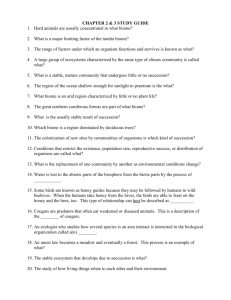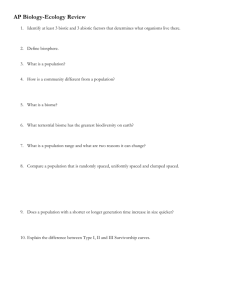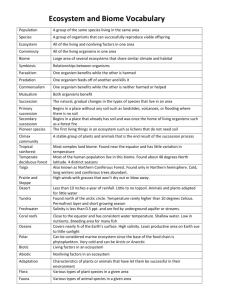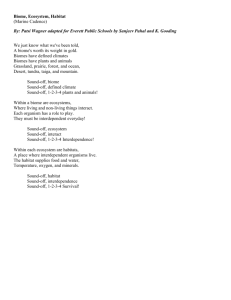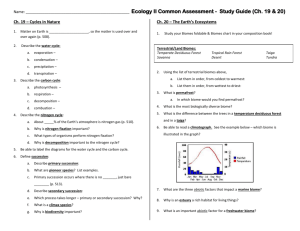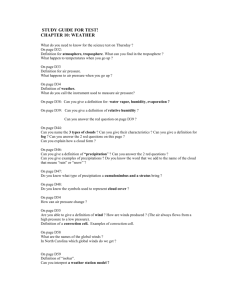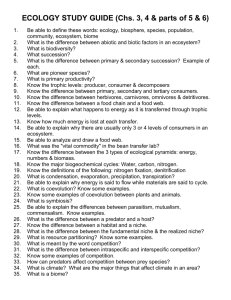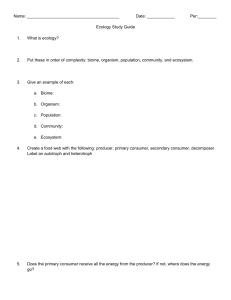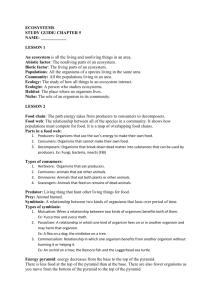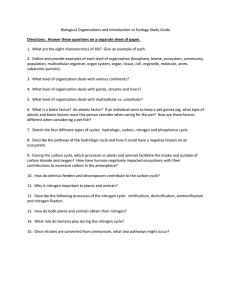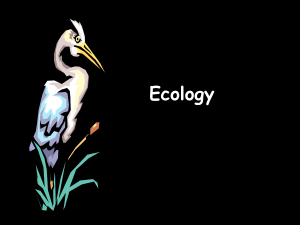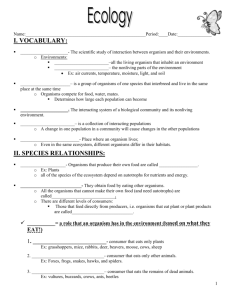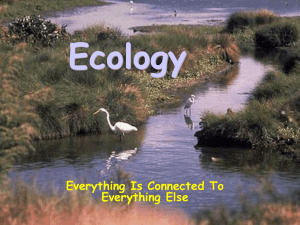Name: Study Guide Introduction to Ecology & Energy in Ecosystems
advertisement
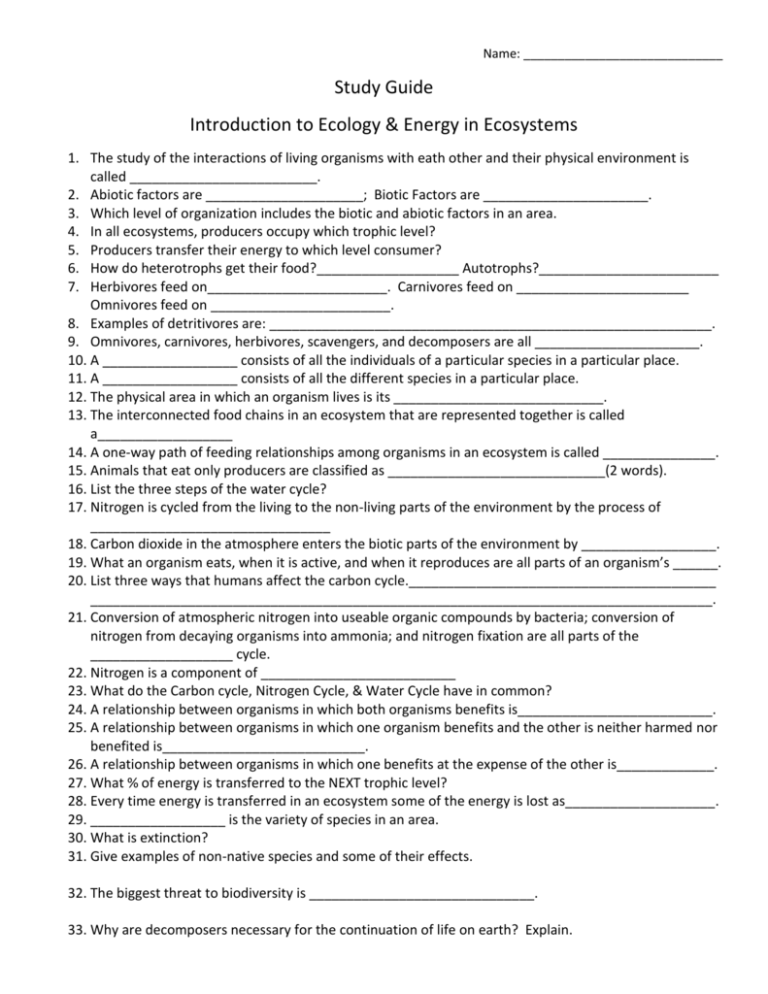
Name: _____________________________ Study Guide Introduction to Ecology & Energy in Ecosystems 1. The study of the interactions of living organisms with eath other and their physical environment is called _________________________. 2. Abiotic factors are _____________________; Biotic Factors are ______________________. 3. Which level of organization includes the biotic and abiotic factors in an area. 4. In all ecosystems, producers occupy which trophic level? 5. Producers transfer their energy to which level consumer? 6. How do heterotrophs get their food?___________________ Autotrophs?________________________ 7. Herbivores feed on________________________. Carnivores feed on _______________________ Omnivores feed on ________________________. 8. Examples of detritivores are: ___________________________________________________________. 9. Omnivores, carnivores, herbivores, scavengers, and decomposers are all ______________________. 10. A __________________ consists of all the individuals of a particular species in a particular place. 11. A __________________ consists of all the different species in a particular place. 12. The physical area in which an organism lives is its ____________________________. 13. The interconnected food chains in an ecosystem that are represented together is called a__________________ 14. A one-way path of feeding relationships among organisms in an ecosystem is called _______________. 15. Animals that eat only producers are classified as _____________________________(2 words). 16. List the three steps of the water cycle? 17. Nitrogen is cycled from the living to the non-living parts of the environment by the process of ________________________________ 18. Carbon dioxide in the atmosphere enters the biotic parts of the environment by __________________. 19. What an organism eats, when it is active, and when it reproduces are all parts of an organism’s ______. 20. List three ways that humans affect the carbon cycle._________________________________________ ___________________________________________________________________________________. 21. Conversion of atmospheric nitrogen into useable organic compounds by bacteria; conversion of nitrogen from decaying organisms into ammonia; and nitrogen fixation are all parts of the ___________________ cycle. 22. Nitrogen is a component of __________________________ 23. What do the Carbon cycle, Nitrogen Cycle, & Water Cycle have in common? 24. A relationship between organisms in which both organisms benefits is__________________________. 25. A relationship between organisms in which one organism benefits and the other is neither harmed nor benefited is___________________________. 26. A relationship between organisms in which one benefits at the expense of the other is_____________. 27. What % of energy is transferred to the NEXT trophic level? 28. Every time energy is transferred in an ecosystem some of the energy is lost as____________________. 29. __________________ is the variety of species in an area. 30. What is extinction? 31. Give examples of non-native species and some of their effects. 32. The biggest threat to biodiversity is ______________________________. 33. Why are decomposers necessary for the continuation of life on earth? Explain. 34. Explain the difference between density independent and density dependent limiting factors. Give examples of each. 35. How does carrying capacity regulate population growth? 36. ___________________ growth occurs in populations and results in a ___-shaped curve when graphed. 37. Define succession. 38. ______________ succession is the regeneration or replacement of an ecosystem that has been disrupted. Be able to identify an example. 39. _____________ succession is the development of an ecosystem where none has existed before. 40. _______________ species are the first to colonize a previously uninhabited area. 41. Define climax community. 42. Review Biomes Notes-Be familiar with characteristics of each biome. a. b. c. d. e. f. g. h. i. j. k. Herds of grazing animals are likely to be found in the __________________. biomes is extremely hot and dry ____________________________ biome is extremely cold and dry__________________________ Biome characterized by evergreen trees (conifers) and moose, caribou, bears, etc____________________________ Biomes characterized by trees that lose their leaves in the fall ____________________ Biome with year round warm temperatures and heavy rainfall _________________ The biome referred to as the breadbaskets of the world__________ Temperate grasslands______________________ Tropcial grasslands_______________________ Biome with the greatest diversity___________________ Biome characterized by permafrost___________________

